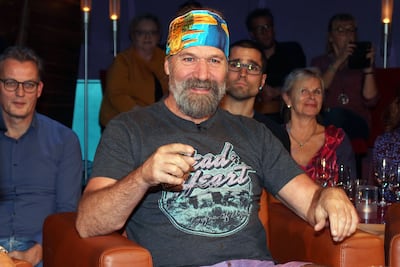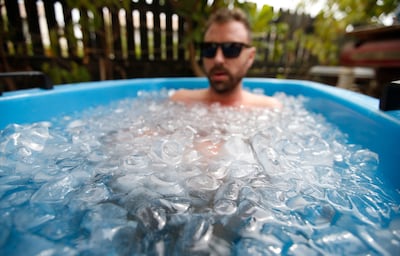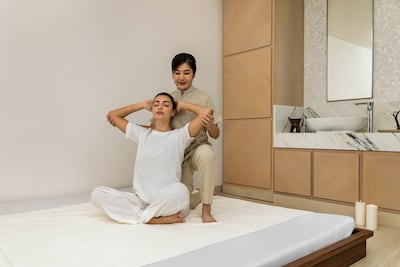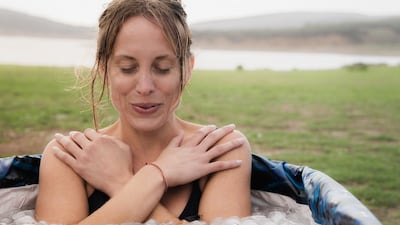Only a couple of centuries ago, immersion in cold water was used as a device of punishment and torture. But in recent years, particularly through the pandemic, ice baths and so-called cold-water therapies have been popularised by celebrities and wellness influencers, as a way to reduce stress, increase energy, get better sleep and boost the immune system.
Dutch motivational speaker and extreme athlete Wim Hof is one of its biggest proponents. Known as Ice Man thanks to his ability to withstand low temperatures, he pioneered his Wim Hof Method, a specific breathing technique combined with cold-water therapy, which he says is “about reconnecting us – to ourselves, to others and to nature”.
Last month, however, a Sunday Times investigation uncovered 11 cases where families claim their loved ones died after performing the Hof breathing method, or a similar technique, with cold-water therapy.

Among them was British woman Kellie Poole, 39, who died from an undiagnosed heart condition triggered by a cold-water immersion therapy session in a Derbyshire river in April 2022, according to a coroner. She developed sudden cardiac arrhythmia after entering the water, which was 10.7ºC, then complained of a headache before she fell forward and later died.
Only a few months later, in August 2022, Madelyn Matzger, 17, died by drowning in her family's swimming pool in California, while, her father believes, copying Hof's method. He has now filed a £67 million lawsuit and is seeking an injunction seeking to ban Hof and his businesses from promoting his breathing method in the US state.
Hof, who holds several world records related to withstanding cold temperatures, and whose life is reportedly about to be turned into a film starring Joseph Fiennes, denies all the accusations.
His son, Enahm, who runs his father's business, has said the Wim Hof Method website offers prominent warnings. But they have noticed an increase in copycats not affiliated them, who may not adhere to strict health and safety protocols, which he told media is “concerning”.
How cold-water therapy became popular

Cold-water therapy is not a new invention, as various methods have been documented throughout history, from the ancient baths of Rome to the therapies used by Hippocrates, known as the Father of Medicine.
One of the oldest surviving medical texts, The Edwin Smith Surgical Papyrus, which dates back to 1600BC, is said to make numerous references to the use of cold as therapy.
three-time Olympian and founder of Roar Fitness
Conversely, in the 19th century, the practice was used on those held in Ireland's Limerick asylum, and then outlawed when a man died in 1873 following “submersion in a cold plunge bath”.
Despite their past use as a punishment, however, extremely cold baths have become beloved by celebrities and those in wellness circles purporting myriad unsubstantiated health benefits. "[They] have been studied for their potential benefits, especially in the context of athletic performance and recovery,” Dr Ruhil Badiani, a family physician at Cornerstone Clinic, tells The National.
Several evidence-backed benefits have been identified, including studies that suggest cold immersion can reduce inflammation and decrease the perception of soreness after intense exercise. It has also been found to potentially improve recovery, enhance mental toughness and boost metabolism to aid weight loss, says Dr Badiani.
Some research suggests that cold exposure might enhance the immune system by increasing the levels of certain immune cells and anti-inflammatory cytokines, adds Dr Badiani. These studies, however, are not conclusive, and much more research is needed to fully understand positive effects, she says.
Sarah Lindsay, three-time Olympian and founder of Roar Fitness, says ice baths aren't for everyone, but she personally likes to use one at her home in Dubai to aid her recovery after exercise.
“It’s definitely made easier by the fact we are in a hot climate and you warm up quickly after,” she says, adding that, for her, it feels refreshing after a walk in the heat and is “not even really challenging any more”.

“I think the fitness culture in the UAE is like nothing I’ve ever seen and people are very health-conscious, leading them to experimenting with different ways of improving their well-being.”
Fitness influencers and celebrities need to be careful when challenging their followers, however, she adds. “I don’t think these social media challenges are very responsible. There’s no medal for who can stay in the coldest for the longest.”
Why are ice baths causing deaths?
The American Heart Association has previously warned against cold therapy, saying evidence supporting the health benefits “remains scant”.
America's National Centre for Cold Water Safety has also warned that sudden immersion in water under 15ºC can “kill a person in less than a minute”, while the British Heart Foundation has said people with heart conditions should check with medical professionals before trying such treatments.
Professor Mike Tipton of the University of Portsmouth, who has been studying the effects of cold water on the body for four decades, found young and healthy individuals had a one to three per cent chance of cardiac arrhythmia when in cold water.
But when they were asked to hold their breath beforehand, that figure rose to 63 per cent. “It’s an incredible way of reproducing cardiac arrhythmias in otherwise fit and healthy individuals,” he told The Times.
founder of Roar Fitness
Dr Zainab Moalla, a general practitioner at Dubai's home healthcare provider NeoHealth, says no matter what method you're using, ice baths can be particularly dangerous to certain individuals “if not administered or monitored properly”.
Risks include hypothermia, skin and tissue damage, increased cardiovascular strain, respiratory issues, nerve and muscle damage, and psychological stress, she says.
Dr Badiani adds that people with cardiovascular conditions, such as hypertension or heart disease, need to be particularly careful when plunging themselves into cold baths because of the risk of increased heart rate and blood pressure.
“Individuals with Raynaud's disease or cold hypersensitivity might experience severe reactions to cold exposure,” Dr Badiani explains. “Those with nerve damage or poor circulation are also at risk for complications like frostbite or prolonged numbness. Additionally, individuals with respiratory issues or asthma should be wary, as the cold can trigger breathing difficulties.”
Pregnant women, and those with compromised immune systems, should always consult a healthcare professional before trying ice baths, she adds.
Lindsay says it's imperative to do your research and follow medical guidelines before plunging in. “Don’t do ice baths alone, especially when you are new to it,” she says.
Are there safer alternatives?

While Dr Badiani says she may recommend ice baths on an individual level for athletes or someone experiencing acute muscle soreness or inflammation, there are safer alternatives that offer similar benefits.
Dr Moalla says these include contrast therapy, which has people alternating between hot and cold-water immersion, or applying hot and cold packs, promoting circulation and reducing muscle soreness.
There's also compression therapy, using garments or wraps to help reduce swelling, as well as light exercise such as walking or stretching for active recovery, baths with Epsom salts, massage therapy, and prioritising hydration, nutrition and sleep.
“Quality sleep and adequate rest are crucial for muscle repair and overall recovery,” says Dr Moalla.
If you are going to do an ice bath, limit it to 10 to 15 minutes at a temperature of 10°C to 15°C, adds Dr Badiani. “It’s crucial to tailor the approach based on individual health status, ensuring safe and effective use. Always prioritise safety.”

